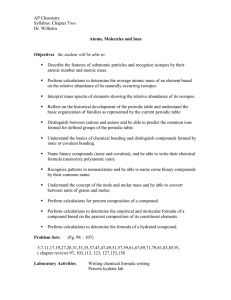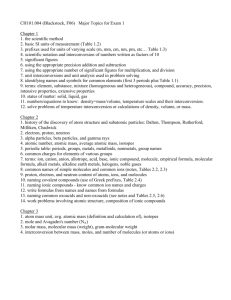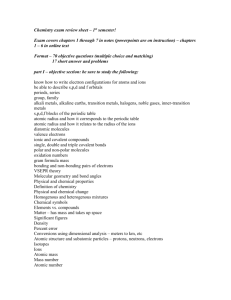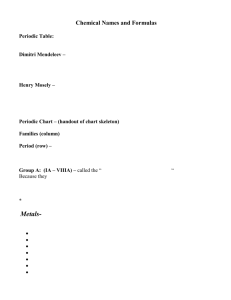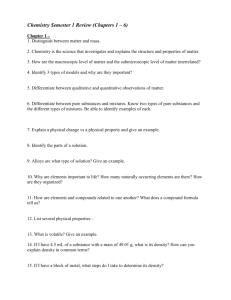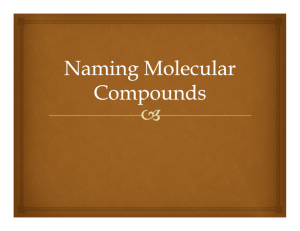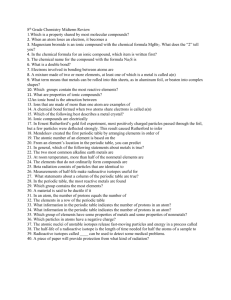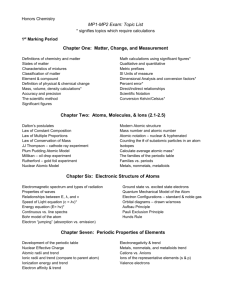AP Chemistry-chapter two reading guide-Kotz
advertisement
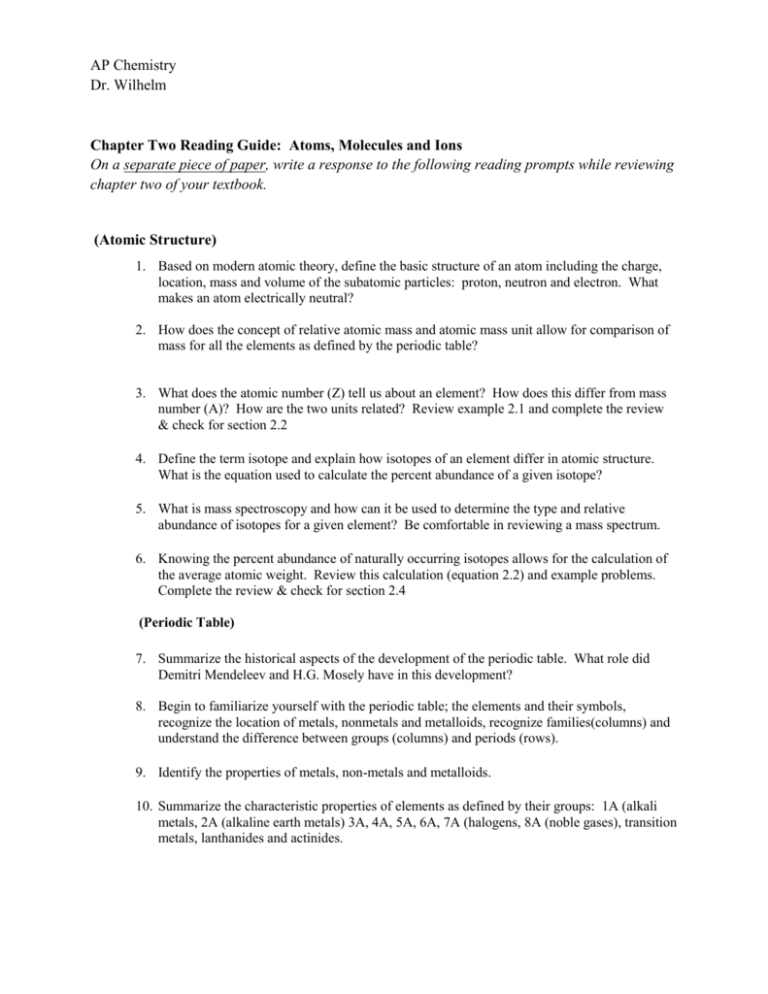
AP Chemistry Dr. Wilhelm Chapter Two Reading Guide: Atoms, Molecules and Ions On a separate piece of paper, write a response to the following reading prompts while reviewing chapter two of your textbook. (Atomic Structure) 1. Based on modern atomic theory, define the basic structure of an atom including the charge, location, mass and volume of the subatomic particles: proton, neutron and electron. What makes an atom electrically neutral? 2. How does the concept of relative atomic mass and atomic mass unit allow for comparison of mass for all the elements as defined by the periodic table? 3. What does the atomic number (Z) tell us about an element? How does this differ from mass number (A)? How are the two units related? Review example 2.1 and complete the review & check for section 2.2 4. Define the term isotope and explain how isotopes of an element differ in atomic structure. What is the equation used to calculate the percent abundance of a given isotope? 5. What is mass spectroscopy and how can it be used to determine the type and relative abundance of isotopes for a given element? Be comfortable in reviewing a mass spectrum. 6. Knowing the percent abundance of naturally occurring isotopes allows for the calculation of the average atomic weight. Review this calculation (equation 2.2) and example problems. Complete the review & check for section 2.4 (Periodic Table) 7. Summarize the historical aspects of the development of the periodic table. What role did Demitri Mendeleev and H.G. Mosely have in this development? 8. Begin to familiarize yourself with the periodic table; the elements and their symbols, recognize the location of metals, nonmetals and metalloids, recognize families(columns) and understand the difference between groups (columns) and periods (rows). 9. Identify the properties of metals, non-metals and metalloids. 10. Summarize the characteristic properties of elements as defined by their groups: 1A (alkali metals, 2A (alkaline earth metals) 3A, 4A, 5A, 6A, 7A (halogens, 8A (noble gases), transition metals, lanthanides and actinides. (Molecules, Compounds and Formulas) 11. What is a molecule and how is it defined by the molecular formula? Distinguish between the use of the condensed formula and the structural formula for a molecule. What type of modeling can be used to describe these molecules? 12. Ionic compounds are formed from attraction of cations and anions. Define these terms. 13. Review the charts provided to recognize the common ionic state of elements based on their arrangement on the periodic table. Review the chart of polyatomic ions. 14. What are the guidelines for writing/naming ionic compounds? Review the example problems. Review the naming process for cations and anions, including patterns and exceptions. * Problem solving tip 2.1 & 2.1 are useful to review for understanding ionic compounds and recognizing when a compound is formed by ionic bonds 15. Complete the review & check for sections 2.7. We will practice continue to practice writing/naming ionic compounds 16. Similarly, review the naming process for molecular compounds and the role of prefixes. Familiarize yourself with the embedded charts that for molecular compounds and their associated name. 17. Complete the review & check sections 2.8. Again, we will practice this. (Atoms, Ions and the Mole) 18. Define the unit mole, what does this unit represent and what is the numerical amount? 19. What is meant by the term molar mass (M) why is this value unique to each element and compound? How can this unit be used as a conversion factor when relating the units of grams and moles? Understand the calculations described in example 2.6 & 2.7 and complete the review & check section 2.9. 20. Define the terms; empirical formula and molecular formula. Both of these can be derived from the percent composition of a compound. What are the three steps involved in deriving the empirical formula from the percent composition? How can this be used to determine the molecular formula? 21. Describe the concept of a hydrated compound. How is the molecular formula written for a hydrate? Example 2.12 describes a technique to determine the about of water associated with copper sulfate. Review this problem and be comfortable with the data manipulation. We will conduct this activity in the lab.
